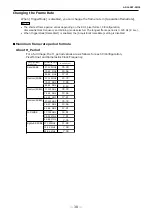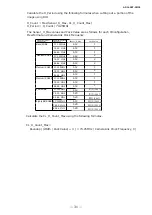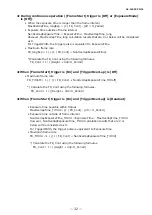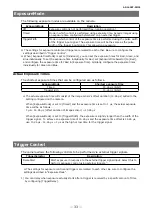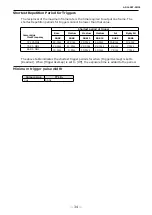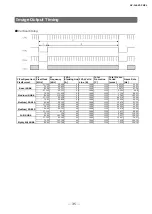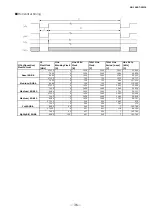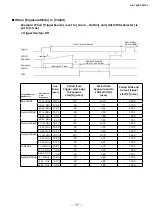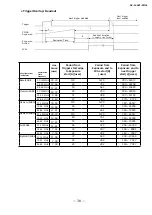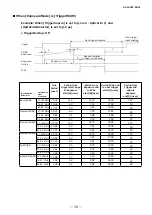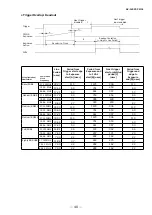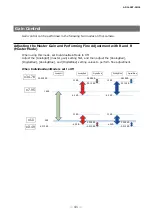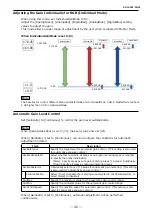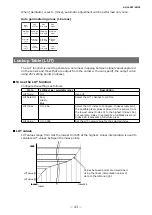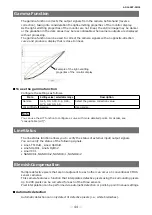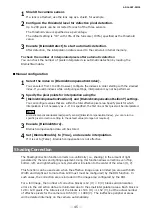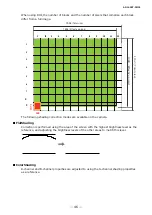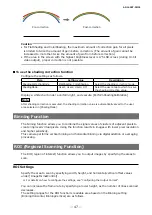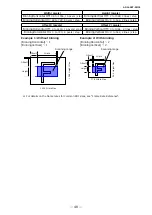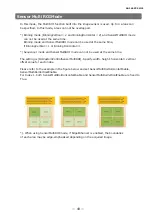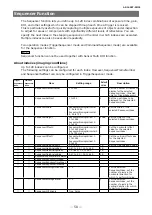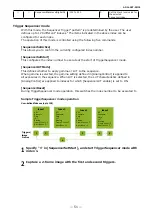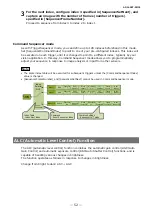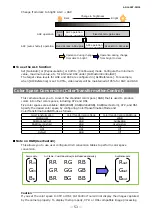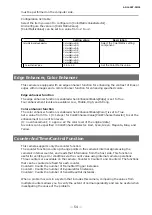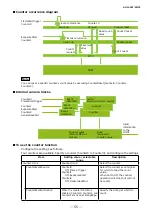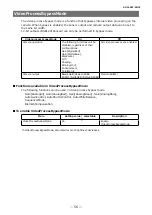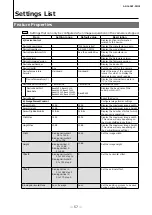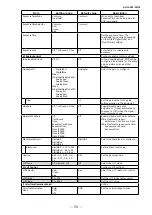
—
44
—
AP-
16
00T-
PMCL
Gamma Function
The gamma function corrects the output signals from the camera beforehand (reverse
correction), taking into consideration the light-emitting properties of the monitor display.
As the light-emitting properties of the monitor are not linear, the entire image may be darker
or the gradation in the dark areas may be less noticeable when camera outputs are displayed
without processing.
The gamma function can be used to correct the camera signals with an opposite-direction
curve and produce a display that is close to linear.
Example of the light-emitting
properties of the monitor display
■
To use the gamma function
Configure the settings as follows.
Item
Setting value / selectable range
Description
Gamma
0.45, 0.5, 0.55, 0.6, 0.65,
0.75, 0.8, 0.9, 1.0
Select the gamma correction value.
JAI LUTMode Gamma
Use gamma.
Note
You can use the LUT function to configure a curve with more detailed points. For details, see
LineStatus
The line status function allows you to verify the status of external input/output signals.
You can verify the status of the following signals.
• Line1-TTLOut1, Line2-OptOut1
• Line5-OptIn1, Line6-OptIn2
• Line7-CC1
• NAND0In1, NAND0In2, NAND1In1, NAND1In2
BlemishCompensation
Multiple defective pixels that are not adjacent to each other can occur on conventional CMOS
sensor cameras.
This camera features a function that interpolates defective pixels using the surrounding pixels.
Up to 200 pixels can be corrected for each of the three sensors.
Pixel interpolation can be performed via automatic detection or point-by-point manual settings.
■
Automatic detection
Automatic detection can only detect lit defective pixels (i.e., white blemishes).

